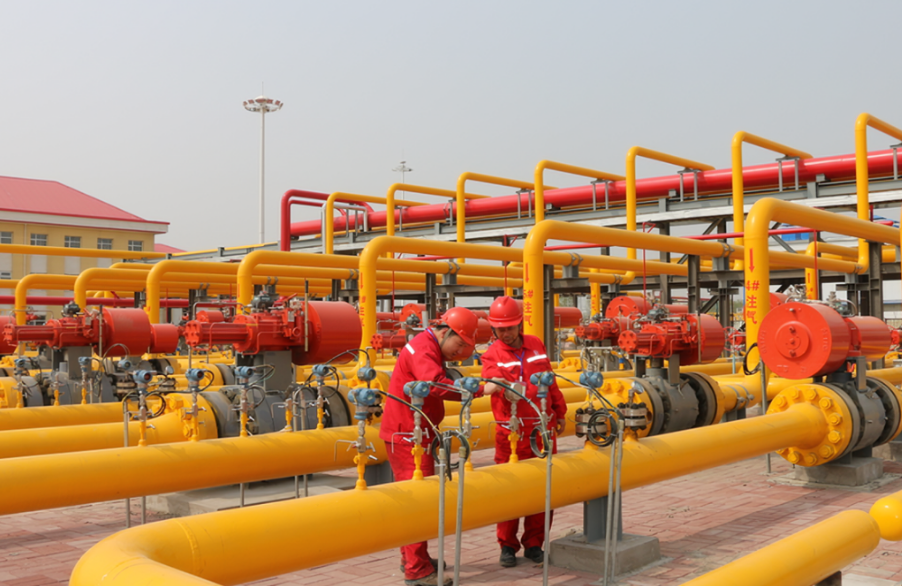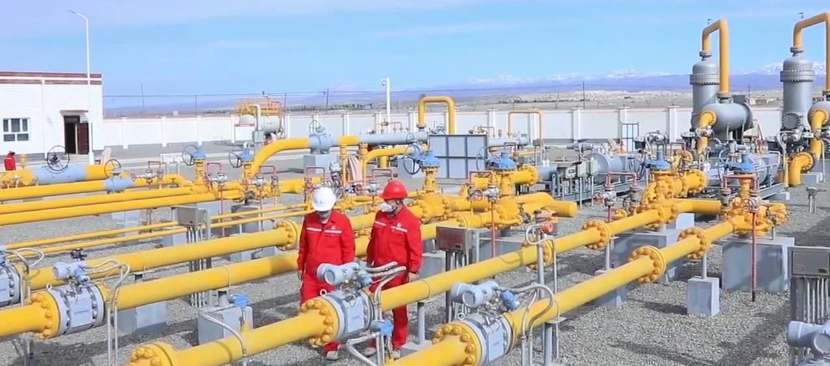Global gas markets are in upheaval
The EIA noted that the continued growth in U.S. LNG exports is mainly due to increased LNG export capacity, higher international natural gas and LNG prices, and increased global demand, especially in Europe.

In the domestic market, the recent price of natural gas in the United States has also continued to rise. The price of Henry Hub, a key US natural gas benchmark, has surged this year to its highest level in years, according to S&P Global Platts. EIA recently predicted that natural gas prices at Henry Hub would rise 54% this winter from a year ago to an average of $7.26 / mmBtu.
S&p Global Platts pointed out that U.S. natural gas consumers will also face higher energy bills than in previous years, but because of restrictions on the ability of the United States to export LNG, U.S. consumers will not face as exaggerated energy prices as European consumers.
Russian conspiracy
After more than half a year of sanctions and counter-sanctions, Russian gas shipments to the EU have dropped significantly. Some analysts point out that the EU is still unable to completely leave Russia's gas resources. In spite of this, Russia, which has hit a wall in the west, has shifted its goal to the process of "eastward" and "southward".
Russia is a natural gas powerhouse. According to bp statistics, in 2021, Russia's natural gas production of 701.7 billion cubic meters, after the United States 934.2 billion cubic meters, is the world's second largest natural gas producer. In 2021, Russia exported 396 billion cubic meters of LNG resources, ranking fourth in the world after Australia, Qatar and the United States.
Since late February this year, Russia and the European Union have continued to play games on energy issues, and the volume of Russian natural gas transported to Europe has declined significantly since the second half of the year.
According to Xinhua Finance reported on November 1, Gazprom released preliminary statistics showing that the company's natural gas production in the first 10 months was 334 billion cubic meters, down 18.6% year on year; Natural gas exports to non-CIS countries amounted to 91.2 billion cubic meters, a decrease of 67.6 billion cubic meters, or 42.6%, compared to the same period last year.
According to Gazprom, the decline in gas demand in EU countries has become a key factor in the reduction of global gas consumption. Gazprom estimates that in the first 10 months of this year, global natural gas consumption decreased by more than 40 billion cubic meters compared with the same period, and the natural gas consumption of EU countries decreased by about 36 billion cubic meters, accounting for 85%; UK gas consumption fell by 4 billion cubic meters year-on-year.
Russian pipeline gas to Europe will drop significantly in 2022. Image Credit: U.S. Energy Information Administration (EIA)
Although the EU is trying to wean itself off Russian energy dependence, the agency noted that Russian gas remains an important source of demand for the EU market. Data provided by energy analyst Rystad shows that in the first nine months of this year, Europe's total LNG imports to Russia reached 1.2 million tons, doubling on the basis of last year, with a total cargo value of between $1 billion and $2 billion.
Kaushal Ramesh, senior analyst for gas and liquefied gas at Rytad, said in an interview with the media that Russia is the fourth largest LNG producer in the world, currently accounting for about 15% of Europe's total LNG supply, and this proportion is expected to remain unchanged into next year.
Due to infrastructure construction, strong demand in Western Europe and other reasons, Russia has long focused on the European direction; With the diversification of energy supply in Europe, the deepening of sanctions against Russia in Europe and the United States, and the rise of market demand in East Asia, Russia, which has hit a wall in the west, has accelerated the pace of "south" and "east" of Russia Gas.
In October, Russia proposed to build a new gas supply hub in Turkey as a way to bring gas back to Europe. This decision fits Turkey's desire to increase its regional influence, but will the EU be willing to accept more Russian gas when the existing pipelines are no longer in use? Many experts questioned the legitimacy of the decision.

The natural gas cooperation between China and Russia has been in contact for a long time, but due to the price and the direction of the pipeline, the two sides did not formally sign a natural gas purchase and sale contract until 2014. In December 2019, the China-Russia East Route natural gas Pipeline was officially put into operation, opening a new chapter in China-Russia natural gas cooperation.
On the basis of the original cooperation, Russia plans to build another natural gas pipeline to China through Mongolia. According to Xinhua News Agency on September 17, during the Samarkand Summit of the Shanghai Cooperation Organization (SCO) in September this year, China, Mongolia and Russia confirmed the five-year extension of the Planning Outline for the Construction of the China-Mongolian-Russia Economic Corridor, officially launched the feasibility study on the upgrading and development of the middle line railway of the China-Mongolian-Russia Economic Corridor, and agreed to actively promote the laying of China-Russia natural gas pipeline through Mongolia.
- EMERSON
- Honeywell
- CTI
- Rolls-Royce
- General Electric
- Woodward
- Yaskawa
- xYCOM
- Motorola
- Siemens
- Rockwell
- ABB
- B&R
- HIMA
- Construction site
- electricity
- Automobile market
- PLC
- DCS
- Motor drivers
- VSD
- Implications
- cement
- CO2
- CEM
- methane
- Artificial intelligence
- Titanic
- Solar energy
- Hydrogen fuel cell
- Hydrogen and fuel cells
- Hydrogen and oxygen fuel cells
- tyre
- Chemical fiber
- dynamo
- corpuscle
- Pulp and paper
- printing
- fossil
- FANUC
- Food and beverage
- Life science
- Sewage treatment
- Personal care
- electricity
- boats
- infrastructure
- Automobile industry
- metallurgy
- Nuclear power generation
- Geothermal power generation
- Water and wastewater
- Infrastructure construction
- Mine hazard
- steel
- papermaking
- Natural gas industry
- Infrastructure construction
- Power and energy
- Rubber and plastic
- Renewable energy
- pharmacy
- mining
- Plastic industry
- Schneider
- Kongsberg
- NI
- Wind energy
- International petroleum
- International new energy network
- gas
- WATLOW
- ProSoft
- SEW
- wind
- ADVANCED
- Reliance
- YOKOGAWA
- TRICONEX
- FOXBORO
- METSO
- MAN
- Advantest
- ADVANCED
- ALSTOM
- Control Wave
- AB
- AMAT
- STUDER
- KONGSBERG
- MOTOROLA
- DANAHER MOTION
- Bently
- Galil
- EATON
- MOLEX
- Triconex
- DEIF
- B&W
- ZYGO
- Aerotech
- DANFOSS
- KOLLMORGEN
- Beijer
- Endress+Hauser
- MOOG
- KB
- Moxa
- Rexroth
- YAMAHA
- Johnson
- Westinghouse
- WAGO
- TOSHIBA
- TEKTRONIX


Email:wang@kongjiangauto.com



































































































































